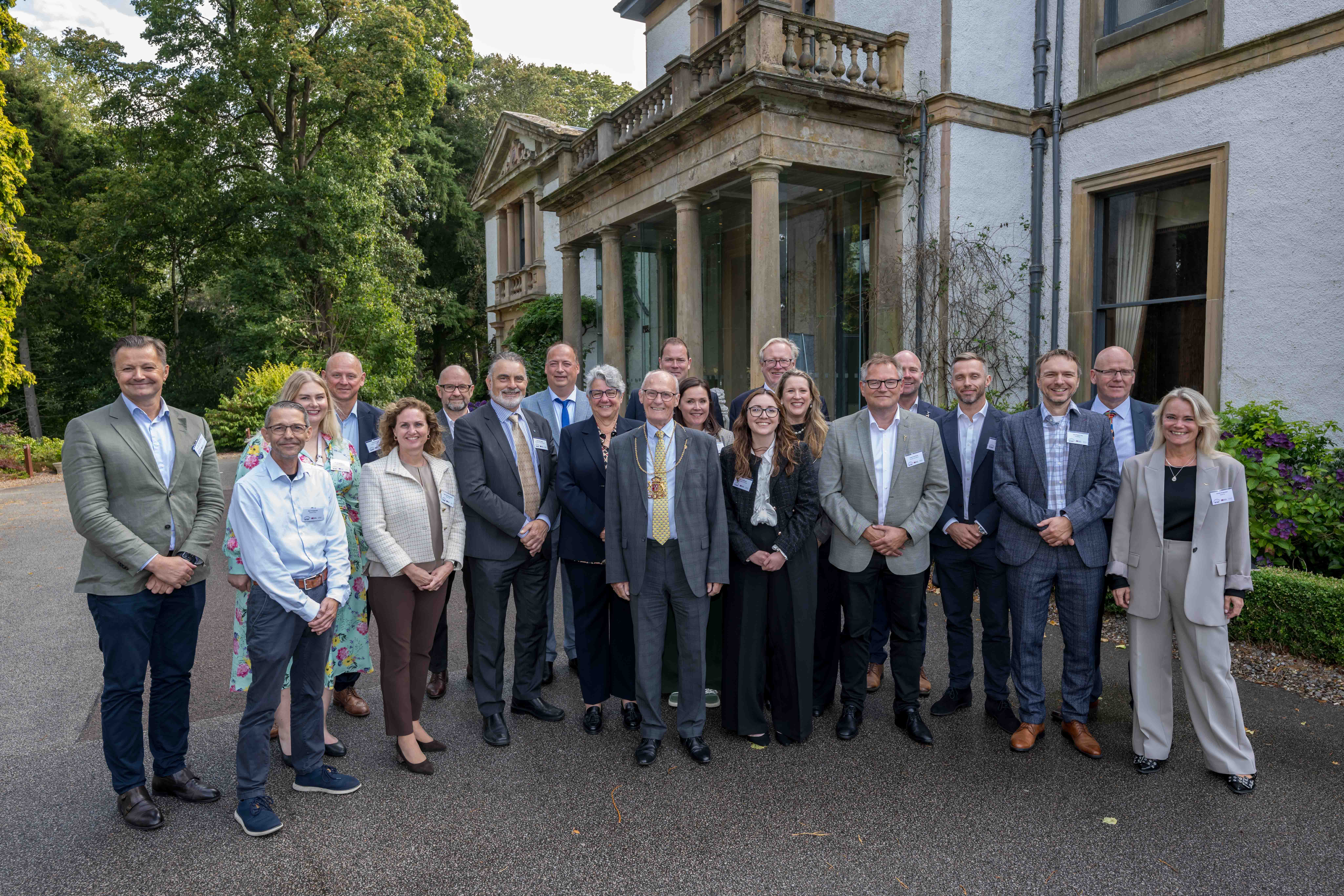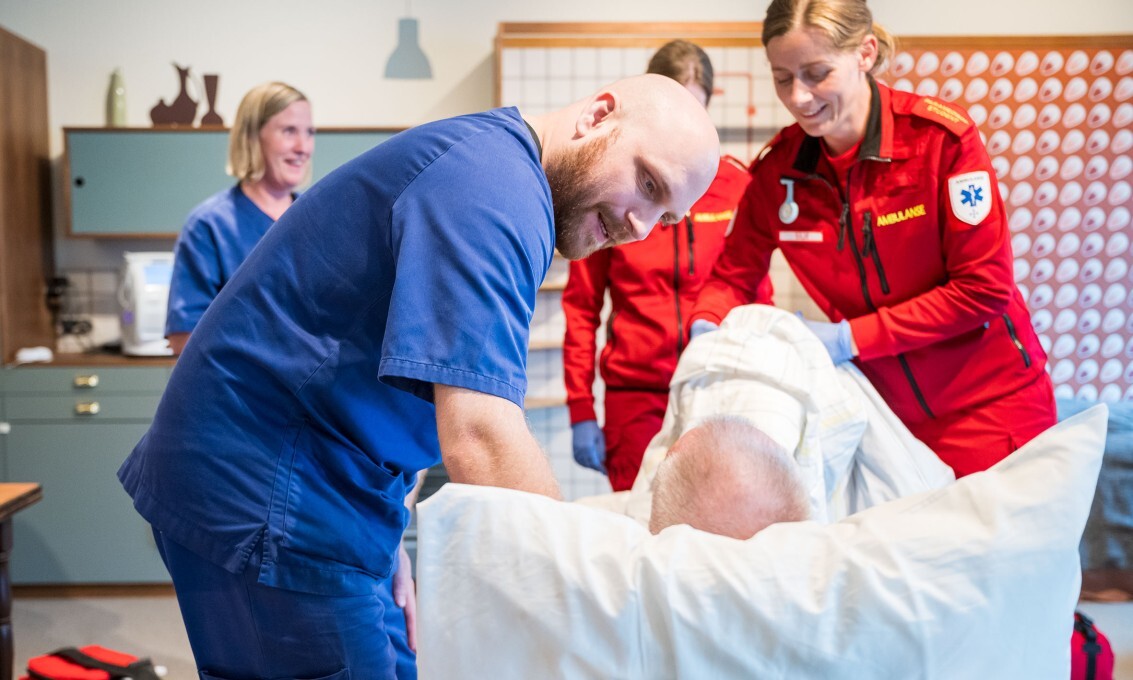Hydrogen in practice at H2 Conference Stavanger 2025
The H2 Conference returned to Stavanger on 11 September with a clear message from industry, policy and research: hydrogen is not a hype cycle, it is a maturing part of Europe’s energy mix. Progress is uneven and capital is tight, yet real projects are moving from pilots to procurement, and the conversations are becoming more practical. For Rogaland and Norway, that pragmatism matters. Our region’s competence from oil and gas, combined with renewables, maritime know-how and carbon storage, positions us to help international companies build credible hydrogen value chains.

Tor Arnesen of Energy Transition Norway opens the H2 Conference. Photo: H2 Conference Norway/Andrea Rocha Photography
Day zero: Civic meetings and new perspectives
The programme began on 10 September with two parallel initiatives. A Groningen–Rogaland delegation programme highlighted the shared history of two regions moving from fossil roots to clean energy leadership. County Mayor Ole Ueland welcomed the Dutch delegation to Stavanger, underlining the North Sea as a bridge for joint innovation, not competition.
At the same time, the Women in Green Hydrogen side event took place at Worley Rosenberg. Organised by New Energy Women, it focused on turning hydrogen projects from ambition to reality. Participants heard perspectives from developers, suppliers and innovators, followed by a panel debate and networking. The event created new connections and widened participation, adding a valuable dimension to the week.
The main conference
Close to 200 participants from more than nine nations gathered at Clarion Hotel Stavanger for the core conference, with 47 speakers and four moderators. The event was co-hosted by Energy Transition Norway, ONS Foundation, the City of Stavanger and Stavanger Chamber of Commerce, with Rogaland County Council as sponsor.
Speakers acknowledged that the market looks different than it did in 2023. Costs are higher, regulations are still evolving, and investors are cautious. Yet the evidence in Stavanger pointed to steady forward motion. Several contributors compared hydrogen’s trajectory to solar, wind and batteries: slow early phases followed by acceleration once adoption and infrastructure reach critical mass.

H2 Conference Norway/Andrea Rocha Photography
Policy clarity, infrastructure and offtake
Three needs came through consistently.
Predictable rules help projects reach final investment decision. Frequent revisions discourage investors and slow timelines.
Infrastructure must grow alongside projects. Europe will need molecules as well as electrons, which means planning for pipelines, storage and port facilities.
Firm offtake contracts de-risk investment. Public procurement in sectors such as ferries, buses and port operations can turn pilots into demand at scale.
Technology and innovation
Companies presented solutions to reduce risk and cost. Worley outlined a modular, standardised plant concept to cut bespoke engineering. Hystar demonstrated efficiency gains of around 10 per cent over common PEM benchmarks, translating into significant power savings. Other voices argued for a portfolio approach. Green hydrogen is the long-term target, while blue and turquoise options can bridge volumes if regulated responsibly.
Maritime as an early market
Shipping emerged as the most promising first mover. Norway has pioneered zero-emission ferries and launched the world’s first liquid-hydrogen ferry in 2023. Ammonia and e-methanol are viewed as practical carriers that can be transported and traded globally. These developments are anchored by international frameworks such as the EU’s climate rules and the IMO’s decarbonisation targets.
Day two: From dialogue to demonstration
The third day translated conference themes into practice with three parallel options.
At Kaupanes Hydrogen in Egersund, participants toured a plant producing 0.4 metric tons of green hydrogen daily, with expansion plans to 20 MW by 2027. The visit showed how scaling from pilot to industrial capacity can support both maritime decarbonisation and grid flexibility.
At Risavika Technology Park in Sola, NORCE and partners presented projects in hydrogen, CO₂ capture and industrial biotechnology, followed by a guided site tour.
In central Stavanger, a maritime workshop brought together cluster actors and analysts to assess alternative fuels, government frameworks and pathways for converting Norway’s offshore vessel fleet.
International dialogue with Groningen
The Groningen delegation underlined the importance of cross-border cooperation. As Europe’s first Hydrogen Valley, Groningen has moved from gas to integrated clean energy, while Rogaland brings hydropower, offshore competence and carbon storage. Discussions linked directly to projects such as Equinor’s planned hydrogen production in Eemshaven, where Norwegian reservoirs could provide storage for Dutch CO₂. County Mayor Ueland highlighted that both Stavanger and Groningen are EU Mission Cities, committed to climate neutrality by 2030, and that regional leadership is essential to achieve these ambitions.

Rogaland County Council Mayor Ole Ueland adresses the delegation from Groningen
Invest in Rogaland at the conference
Invest in Rogaland and Stavanger Business Region hosted a stand to present market entry opportunities, staffed by Rita Østbø Stobbs, Even Eide and Tore Meinert. The stand served as a meeting point for international delegates exploring partnerships, sites and projects in Rogaland. Together with Rogaland County Council, Invest in Rogaland also co-organised the afterwork event, which gave delegates and local actors a chance to continue conversations in an informal setting.

Even Eide of Stavanger Business Region and Rita Østbø Stobbs of Invest in Rogaland
A steady, practical path forward
The H2 Conference showed that hydrogen is not expanding as rapidly as many hoped in 2023, but it is expanding. Technology is improving, pilot projects are multiplying, and regulatory frameworks are within reach. Europe will move faster when rules are stable, offtake is firm and infrastructure is mapped.
For international companies, Rogaland offers an integrated test bed where pilots, clusters and industrial partners are already working on hydrogen, offshore wind, CCUS and green maritime solutions. Invest in Rogaland is here to help international companies enter the Norwegian market, connect to the right partners and explore opportunities for growth.

